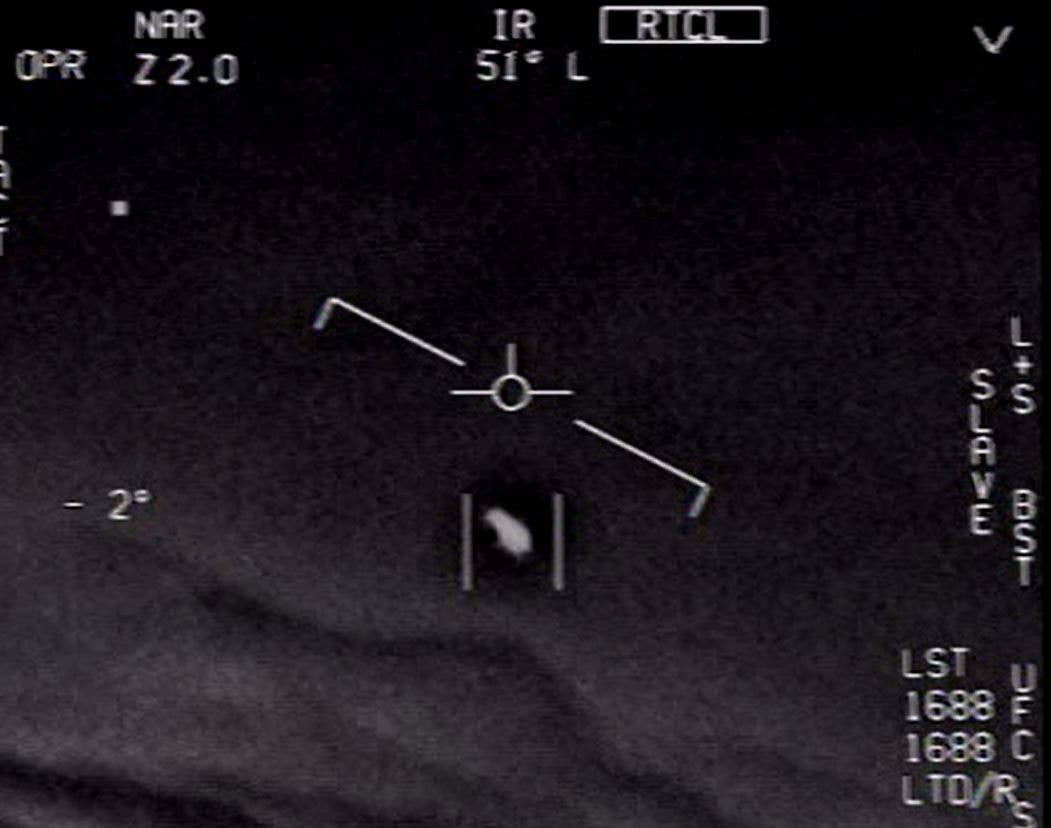NASA Names Research Group to Study UFOs and UAPs
Are sightings of unidentified aerial objects evidence of extraterrestrial life? That’s what the government intends to find out.

A screenshot of an unclassified U.S. Navy video of unidentified aerial phenomena. [Source: DOD]
When UFOs (unidentified flying objects) are mentioned, some people may conjure images of little green beings, while others suspect these situations are due to human-made events. So, what’s the real story behind these sightings? That’s what NASA hopes to find out via a new nine-month research study.
The acronym UFO has been used for decades since the 1950s. Today, the U.S. government prefers to use UAP or unidentified aerial phenomena to refer to airborne objects not immediately identifiable. This acronym represents the broadest category of airborne objects reviewed for analysis.
In 2021, the Pentagon and other government entities released some of their findings regarding UAP reports near civilian and military aircraft. A U.S. government report by the Office of the Director of National Intelligence described numerous sightings of UAPs but says it found no evidence of aliens. However, the release acknowledged 143 reports of "unidentified aerial phenomena" since 2004 that could not be explained.
Aside from identifying the source of these sightings, the government wants to assess what threat level these unidentifiable objects may have to aviation operations. That’s where NASA steps in.
Scope of Research
While some government agencies look at the UAPs as a threat to national security, NASA’s focus is about ensuring aviation safety. While space exploration comprises most of its headlines, the agency’s Airspace Operations and Safety Program (AOSP) is all about safety for aircraft that we know are operated by human beings.
NASA wants to uncover the mystery of UAPs, so in June, the space agency announced that it had commissioned a panel to investigate these sightings and determine their cause, earthly or otherwise.
"Exploring the unknown in space and the atmosphere is at the heart of who we are at NASA," said Thomas Zurbuchen, associate administrator of the Science Mission Directorate (SMD).
The agency’s work will help establish which events are natural to mitigate threats to aerospace operations. To date, NASA has made it clear that it has found no evidence that UAPs come from a source that could be classified as extra-terrestrial. Even if they are not, these objects can still pose a danger to aircraft. That’s why NASA has teamed up with the Federal Aviation Administration (FAA) and a cohort of individual experts to address these safety concerns.
The All-Star Team of Experts
A team of 16 highly experienced investigators has been chosen for this study and the roster reads like a “Who’s Who” in the scientific community. Astrophysicist David Spergel, president of the Simons Foundation in New York City and previously the chair of the astrophysics department at Princeton University, will lead the group. Daniel Evans, the assistant deputy associate administrator for research at NASA’s Science Mission Directorate, will serve as the NASA official responsible for orchestrating the study.
In addition to Spergel and Evans, the other team members consist of experts in computational and data science, astrophysicists, oceanography, and planetary science. Famed test pilot and former astronaut Scott Kelly has been invited and the FAA is also actively involved with two key officials joining the group. Warren Randolph, deputy executive director of the FAA Accident Investigation and Prevention for Aviation Safety department, and Karlin Toner, acting executive director of the FAA's Office of Aviation Policy and Plans and formerly director of the FAA's global strategy will have vital roles in the research.
The Post Research Phase
NASA has allotted nine months for the study. After reviewing and compiling its findings, the investigative team will publish a public report mid-2023. The study will "lay the groundwork for future study on the nature of UAPs for NASA and other organizations," the space agency said in a statement. This nine-month study does not involve an independent review board, which NASA uses when initiating early-stage strategic missions.
NASA expects to hold a full public meeting of the UAP Independent Study Team in late spring, 2023. The meeting will be recorded and broadcast. After that, the agency said it will coordinate widely across the government regarding how to apply its findings and the scientific tools that may be used to shed light on the nature and origin of UAPs.

Subscribe to Our Newsletter
Get the latest FLYING stories delivered directly to your inbox






